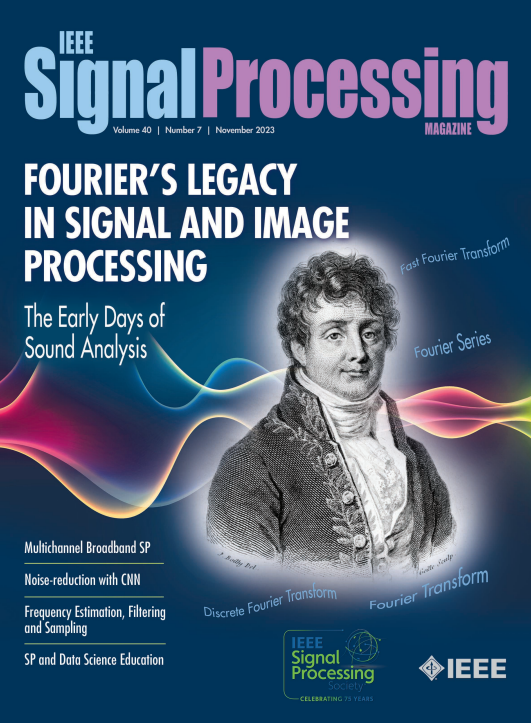离散余弦变换及其对视觉压缩的影响:发明五十年[透视]
IF 9.4
1区 工程技术
Q1 ENGINEERING, ELECTRICAL & ELECTRONIC
引用次数: 0
摘要
压缩对于信号的有效存储和传输至关重要。一种强大的压缩方法是通过应用正交变换,将一组${N}$数据样本转换为一组${N}$变换系数。在变换编码中,首先对${N}$样本进行变换,然后将系数单独量化并熵编码为二进制位。该变换有两个目的:一个是将原始${N}$样本的能量压缩为方差越来越小的系数,以便去除较小的系数具有可忽略的重建误差;另一个是对原始样本进行去相关,以便在不损失压缩性能的情况下对系数进行单独量化和熵编码。Karhunen–Loève变换(KLT)是具有平稳协方差矩阵的源信号的最佳变换,因为它完全去相关原始样本,并且它最大化了能量压缩(即,它需要最少的系数才能达到目标重建误差)。然而,KLT是依赖于信号的,并且不能用快速算法来计算。本文章由计算机程序翻译,如有差异,请以英文原文为准。
The Discrete Cosine Transform and Its Impact on Visual Compression: Fifty Years From Its Invention [Perspectives]
Compression is essential for efficient storage and transmission of signals. One powerful method for compression is through the application of orthogonal transforms, which convert a group of
${N}$ ${N}$ ${N}$ ${N}$
求助全文
通过发布文献求助,成功后即可免费获取论文全文。
去求助
来源期刊

IEEE Signal Processing Magazine
工程技术-工程:电子与电气
CiteScore
27.20
自引率
0.70%
发文量
123
审稿时长
6-12 weeks
期刊介绍:
EEE Signal Processing Magazine is a publication that focuses on signal processing research and applications. It publishes tutorial-style articles, columns, and forums that cover a wide range of topics related to signal processing. The magazine aims to provide the research, educational, and professional communities with the latest technical developments, issues, and events in the field. It serves as the main communication platform for the society, addressing important matters that concern all members.
 求助内容:
求助内容: 应助结果提醒方式:
应助结果提醒方式:


